[T????] ????? ?? Git? Github Page ??? ???
- 1. ????? ?? Git ? Github Page ??? ??? ???(@subinium) 65?
- 2. @subinium (# ) SW 10 (2020.01)
- 4. Git Github Github Page Git GIt Idea Easy Git Github Sourcetree Markdown Github Page
- 6. Git ?? Git , ? Git ?
- 7. 2019_ 2019_ _ 2019_ _ 2 2019_ _ 2019_ _ 2019_ _ ?? ?? ĪŁ 1 2 3 4 5 6 * :
- 8. 1. : ? 2. : CMD / CTRL + Z , 3. : N N 4. :
- 9. !
- 10. VCS (Version Control System, ) ,
- 13. Linux (Linux) DVCS BitKeeper Linux Linus Tovalds Linux (Linux) 1991 2002 2005 Simple History of Git
- 14. File A File B File C Version 1 Version 2 Version 3 Version 4 Subversion (SVN) ”żA1 ”żA2 ”żB1 ”żC1 ”żC2 CVCS(Central VCS, )
- 15. Git DVCS, , File A File B File C Version 1 A1 C1 Version 2 A2 Version 3 B1 C2 Version 4 BĪ» BĪ» C1Ī» A2Ī»
- 16. Git work ow . 3~4 :) : https://knowyourmeme.com/photos/572093-how-to-draw-an-owl
- 18. ??? ??? (Initialization & Repository) Repo( ) ( ) , , , Git
- 19. Git Git? ?? Local ?? ??? ?? local ( ) , Wi-Fi Git? ???? ??? ? ? ??. == => -1 == + (-1)
- 20. Git ??? Git? ??? ???? ???. Git X. , . X About Page
- 22. Git Git 3 Unmodi?ed Modi?ed Staged ( ) ( , Staging)
- 24. Git ?? ?, ????? ??? ?? (1) ?? ?? ?, ???? ????? ? # ( ) ? 1. 2.
- 25. Git ?? ?, ????? ??? ?? (2) ?? ? ??? ?? ?? ??? ? # , ? Stage .
- 26. Git Committed Committed File A 234DE21~ File A 1AC3981~ Status 40 + ?!
- 27. Git ??? ??? ?? (Content-addressable Key-Value Storage) Key , ( ) Hash SHA1 40 * Hash :
- 28. Git Commit Hash Checkout !
- 29. Git
- 30. https://www.sourcetreeapp.com/ Git ? NO! GUI https://git-scm.com/downloads/guis
- 31. Terminal, git bash ? . https://git-scm.com/downloads
- 33. DEEP
- 34. . .
- 35. 0.0.1 1.0.0 1.0.1 . 1.1.0 [A].[B].[C] . 3 . . [A] : Major : [B] : Minor : , [C] : Patch :
- 36. ?
- 37. NO! .
- 38. ??? ?? ??? (Branch)! Master Develop
- 39. [ ] Github .
- 40. ???? ? ??? ? ??? ? ?? ??
- 42. .git .git . .
- 43. .gitignore .gitignore ? ( ) .gitignore . https://github.com/github/gitignore
- 44. README.md : - - - README.md , , LICENSE + Repo Main Page OpenSource PyTorch README
- 45. README.md : 1. ( / ) 2. 3. 4. 5. 6. 7. 8. 9.
- 49. ?? commit ?? ????git log / commit, Date, Author, Message commit : B191209~ Date : 19.1.1 Author : nick Message : README commit : 97A0725~ Date : 18.1.1 Author : nick Message : README commit : 1357248~ Date : 17.1.1 Author : nick Message :
- 52. ?? ??? ???? ??
- 54. master Commit ? master , ?
- 58. ?? Branch ??? ?? ????? ??
- 59. .. ( ) ?
- 62. ???? ?? ?? ???? ??
- 64. 2 . Pull Fetch . . PULL / FETCH
- 66. : PULL MasterOrigin/Master . (fetch + merge) ?? ???? ????? mergegit pull
- 67. ? (Con ict) Commit (reset, revert),
- 69. ? . , clone .
- 70. RESET! Master Branch ?? ??? ???git reset [option] [branch] , reset ! ! (Hard, Mixed, Soft) Reset Master
- 72. Branch ? ?? ???? ?? ???? ?? ????git stash , branch ? ! Working Directory Stash Stash Apply
- 73. ???? ?? ??? ??
- 75. PUSH I am groot PUSH ? . ?
- 76. Fork Clone + Remote Branch add, commit, push : https://wayhome25.github.io/git/2017/07/08/git- rst-pull-request-story/ Pull Request(PR) Code Review Merge PR Merge branch Groot : I am Groot( ) Avengers : ;; Avengers : ? : Pull Request
- 78. Github Page ???? Github Page + Jekyll !
- 79. Markdown , HTML . Markdown Editor
- 80. Visual Studio Code Markdown-preview-enhanced Title bold, italic, Quote List Table link, image Code (Highlight) Formula (KaTex, MathJax) Diagram (Mermaid)
- 81. ???? Commit? ?? ?? 1. TIL (Today I Learned) : 2. Jekyll Blog : : http://planetozh.com/blog/
- 82. Github Ruby Ruby
- 83. ????? ??? ??? CLI? ?? Mac, Ubuntu terminal, Windows Cmd with Ruby https://jekyllrb.com/docs/installation/windows/
- 84. 1. Theme Repo Clone / Fork 2. Jekyll 3. setting : _con g.yml 4. 5. About
- 85. Github Theme Minimal mistake Github Page = Good for Custom
- 87. Jekyll _con g.yml : _posts : _pages : _includes : _layouts : assets : image, css index.html :
- 89. Post Setting Title Category Tag Permalink TOC (Table of Contents) Sidebar Overlay Image / Teaser
- 90. About Page (CV) = Portfolio, Resume http://woowabros.github.io/experience/2017/07/17/resume.html https://sujinlee.me/professional-github/
- 91. 1. ? ???? ?? ?? ?? ??? ???? ?? 2. ?? ??, ?? ?? ??? ?? ?? ?? 3. ??? ???? ??? ?? ?? : Editor + Image + Knowledge 4. ??? ???? ???, ?? ?? ????? 5?? ?? ??? ?? 5. ??? ???? ??? ? ?? ?? 6. ?? ???? ???? ?? ?? Blogging OVERVIEW 1 2 3 4 5 6
- 92. Why? Think About ? ?? ??? Self Branding & Study
- 93. Who? Think About ??? ?? ? ???, ?? ?? ?? ????
- 94. How? Think About ??? ? ???? ??? ?? ??
- 95. What? Think About ??? ????? ?? ??? ?? ?
- 96. Where? Think About ??? ? ???? ???? ??
- 97. When? Think About ???? ??? ??? ????
- 98. : https://youtube.com/c/ : https://subinium.github.io A.I. Lookbook : https://www.facebook.com/AI.Lookbook : https://www.facebook.com/algoguide/ : https://www.facebook.com/shovelingdesignoper/ Thank You

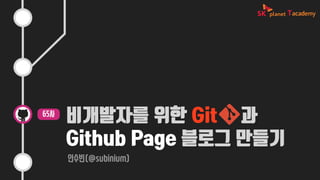
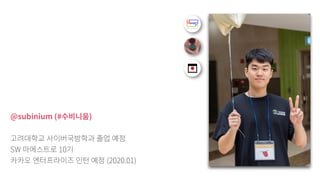
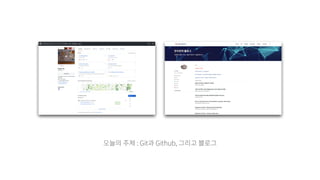
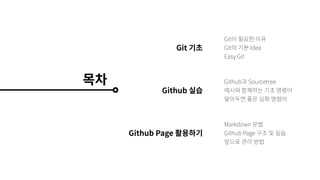
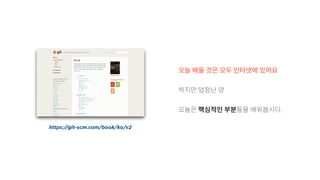
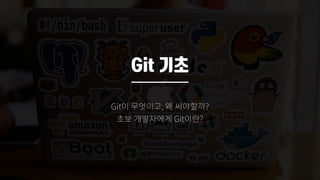
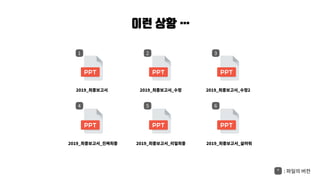
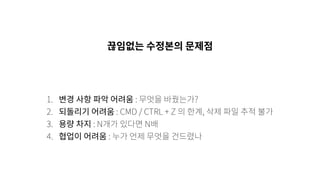

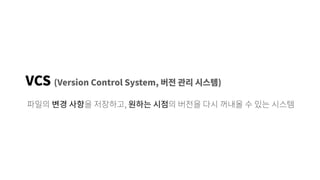
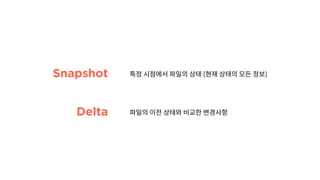
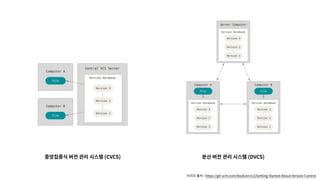
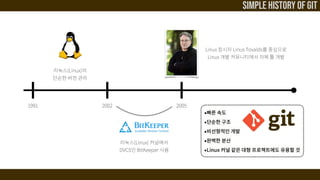
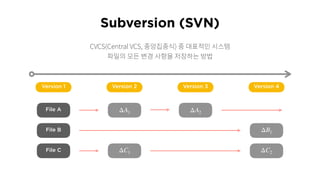
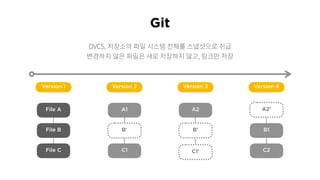
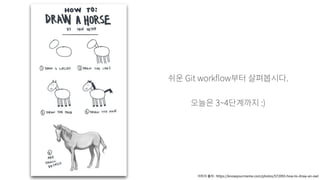
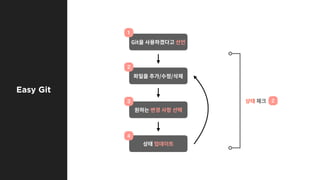
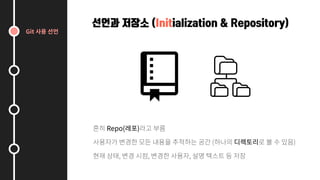
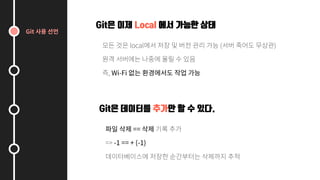
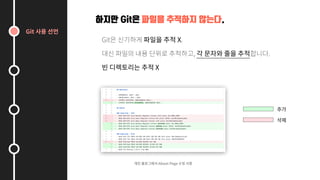

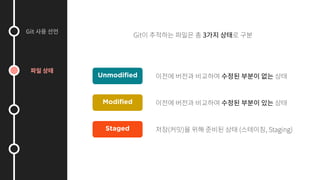
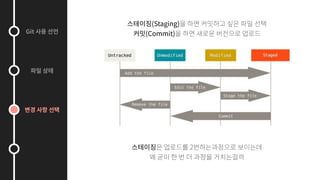


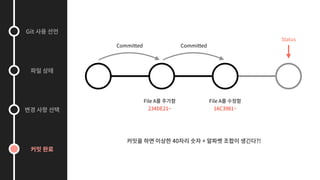
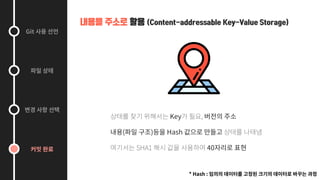
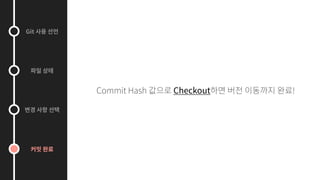
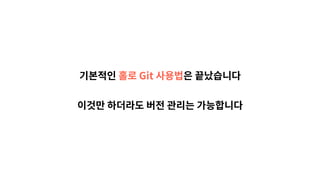
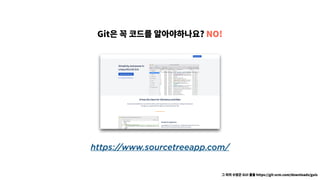

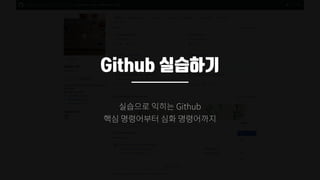
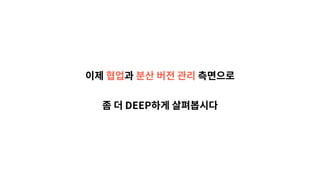
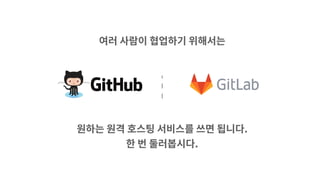
![0.0.1 1.0.0 1.0.1
.
1.1.0
[A].[B].[C] . 3 .
.
[A] : Major :
[B] : Minor : ,
[C] : Patch :](https://image.slidesharecdn.com/gitgithub-191217130840/85/T-Git-Github-Page-35-320.jpg)


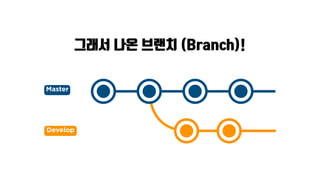
![[ ]
Github
.](https://image.slidesharecdn.com/gitgithub-191217130840/85/T-Git-Github-Page-39-320.jpg)

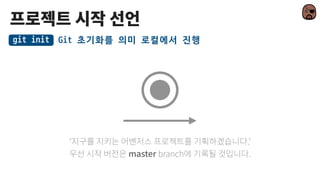
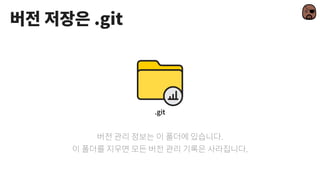
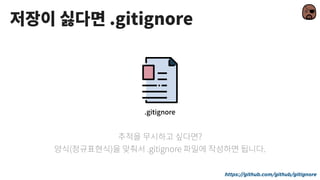
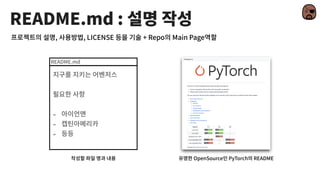

![[file]? ????? ??, ??? ??? ??git add [file]
Unmodi?ed
Modi?ed
Staged
+ README.md
+ README.md](https://image.slidesharecdn.com/gitgithub-191217130840/85/T-Git-Github-Page-46-320.jpg)
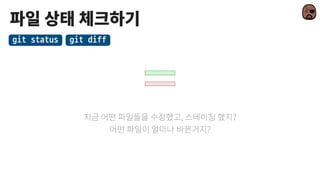
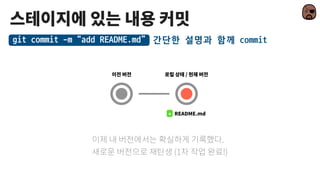
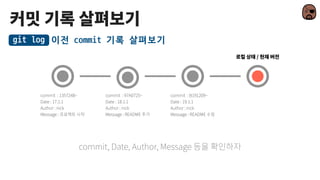
![origin??? ???? [url]? ??git remote add origin [url]
Origin/Master
+ README.md
. ( )
Master](https://image.slidesharecdn.com/gitgithub-191217130840/85/T-Git-Github-Page-50-320.jpg)
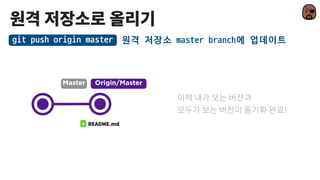

![Master
?? ????? ????git clone [url]
Origin/Master
.](https://image.slidesharecdn.com/gitgithub-191217130840/85/T-Git-Github-Page-53-320.jpg)
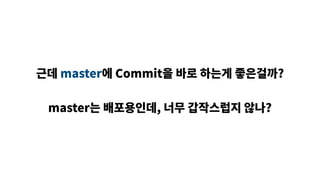
![Origin/Master
[name] branch ???git branch [name]
Master
suit](https://image.slidesharecdn.com/gitgithub-191217130840/85/T-Git-Github-Page-55-320.jpg)
![Origin/Master
/
[name] branch? ????git checkout [name]
Master
.
suit](https://image.slidesharecdn.com/gitgithub-191217130840/85/T-Git-Github-Page-56-320.jpg)
![Origin/Master
[name] branch? ?? branch? ???git merge [name]
Master
suit
(master)
, push .](https://image.slidesharecdn.com/gitgithub-191217130840/85/T-Git-Github-Page-57-320.jpg)

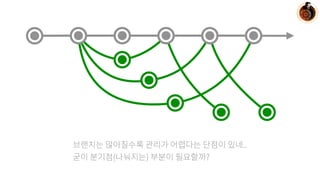
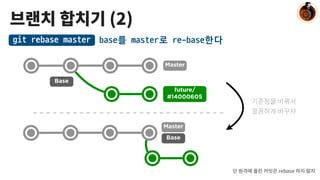
![??? branch? ????.git branch -d [name]
Master
future/
#14000605
future/
#14000604
future/
#14000603
branch](https://image.slidesharecdn.com/gitgithub-191217130840/85/T-Git-Github-Page-61-320.jpg)

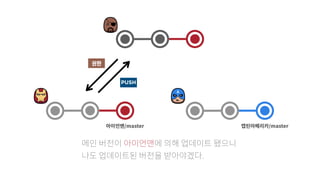
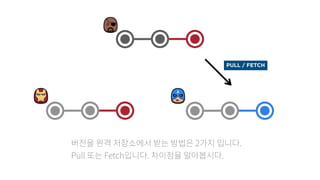
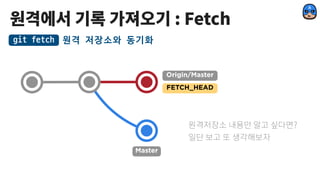
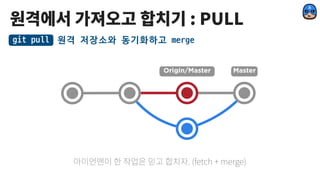



![RESET!
Master
Branch ?? ??? ???git reset [option] [branch]
, reset !
! (Hard, Mixed, Soft)
Reset
Master](https://image.slidesharecdn.com/gitgithub-191217130840/85/T-Git-Github-Page-70-320.jpg)
![.
Master
??? ??? ???git revert [branch]
,
revert
Revert
Master](https://image.slidesharecdn.com/gitgithub-191217130840/85/T-Git-Github-Page-71-320.jpg)
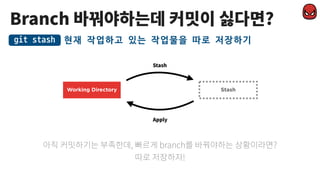

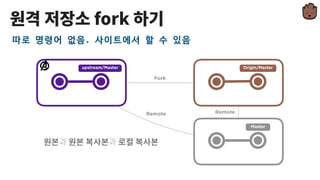
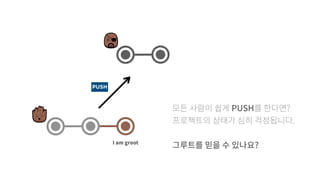
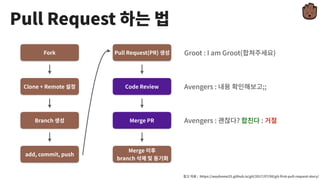
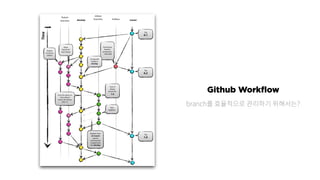
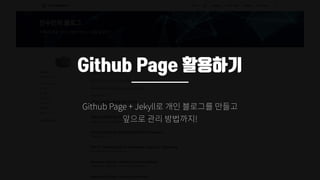
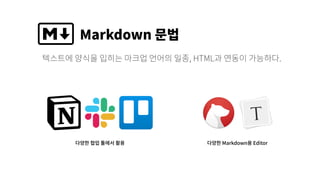
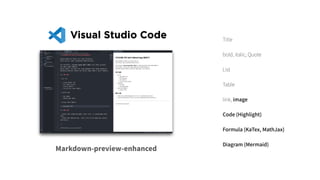
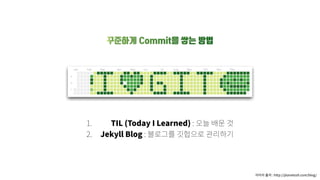
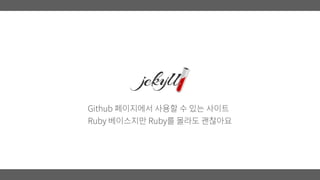
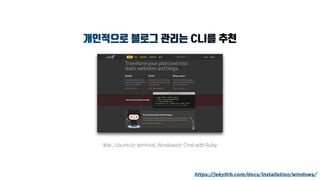

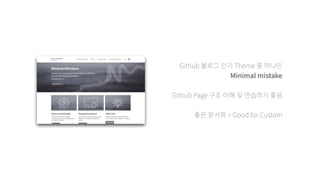
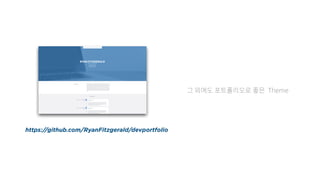
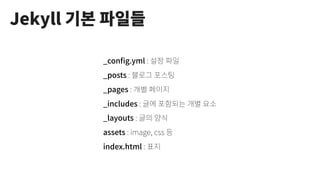
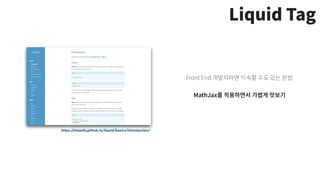
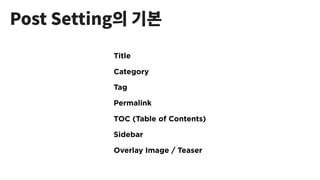
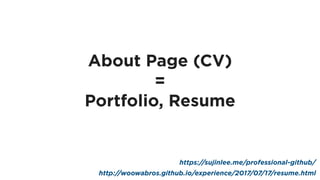
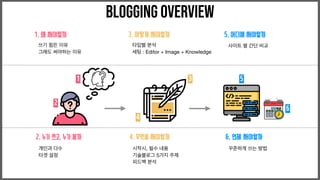




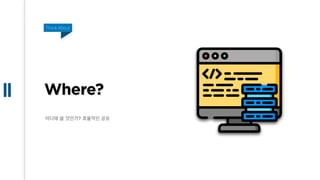






























![[???????] Docker? ??? Gitlab CI/CD ?? ???](https://cdn.slidesharecdn.com/ss_thumbnails/dockergitlabci-cd-180103202327-thumbnail.jpg?width=560&fit=bounds)








![[VCS] Git&GitLab_Designer](https://cdn.slidesharecdn.com/ss_thumbnails/vcsgitgitlabdesigner-170912120609-thumbnail.jpg?width=560&fit=bounds)
![[NDC16] Effective Git](https://cdn.slidesharecdn.com/ss_thumbnails/effectivegit-160428075751-thumbnail.jpg?width=560&fit=bounds)


![XECon2015 :: [1-3] ??? - Git Workflow with GitHub](https://cdn.slidesharecdn.com/ss_thumbnails/xecon-160404022500-thumbnail.jpg?width=560&fit=bounds)










![[Keynote? ???? GAN?] DCGAN](https://cdn.slidesharecdn.com/ss_thumbnails/dcgan-200321051601-thumbnail.jpg?width=560&fit=bounds)
![[Keynote? ???? GAN?] Vanilla GAN](https://cdn.slidesharecdn.com/ss_thumbnails/gan-200321043443-thumbnail.jpg?width=560&fit=bounds)








![[????? ???? ????] 1? ?????](https://cdn.slidesharecdn.com/ss_thumbnails/mltutorial1-190308025240-thumbnail.jpg?width=560&fit=bounds)